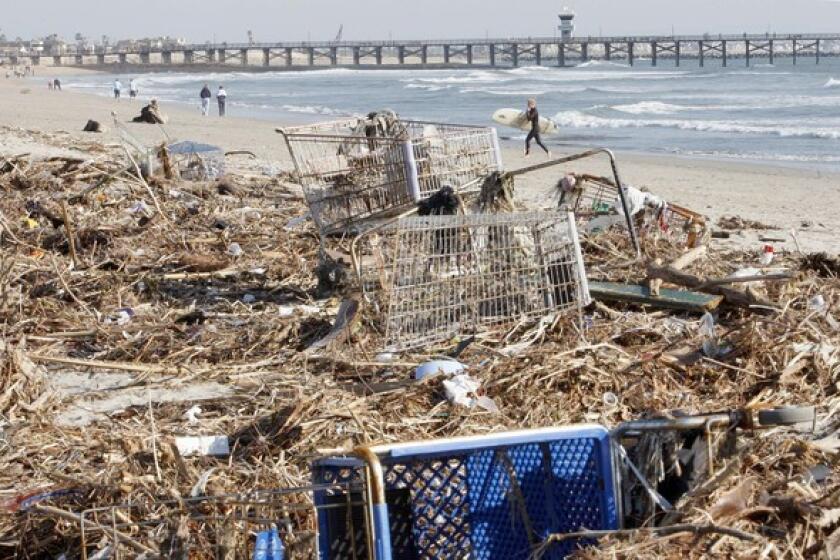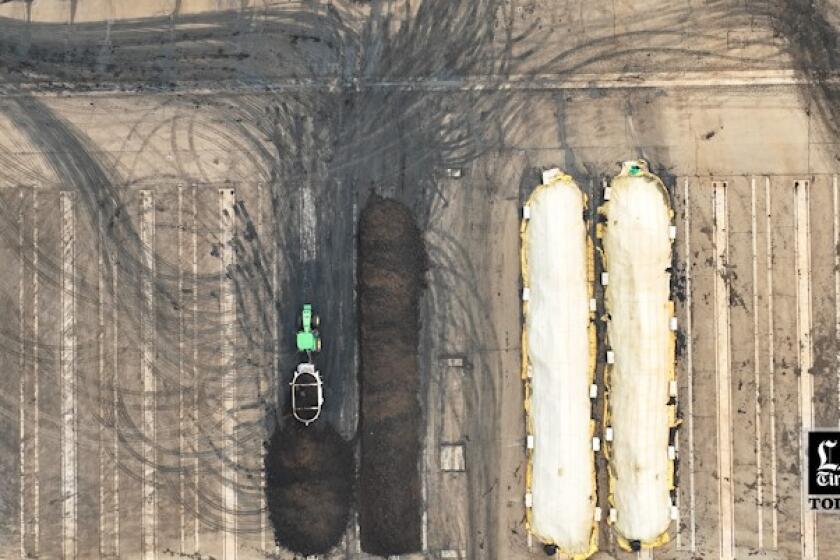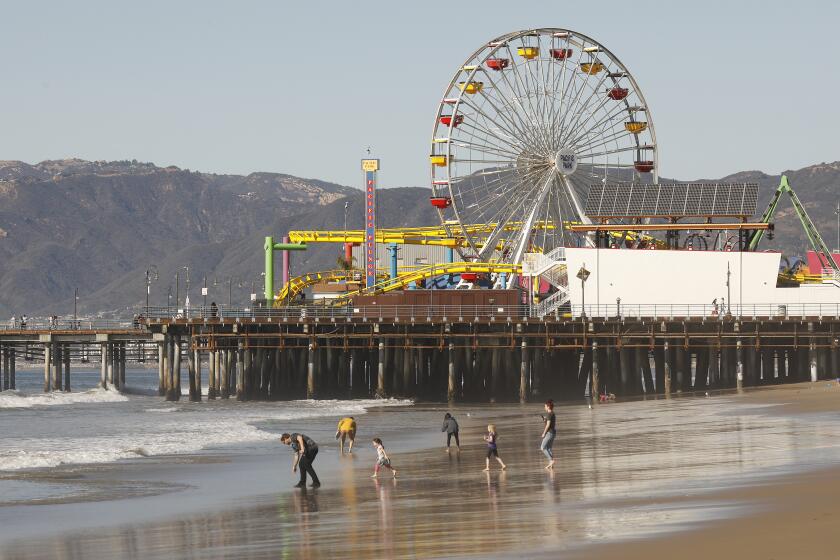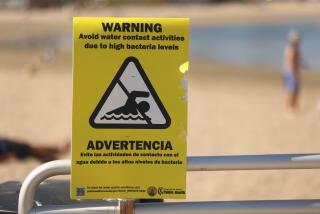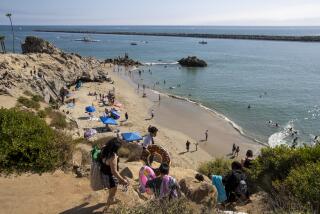These are California’s dirtiest beaches. Is your favorite on the list?
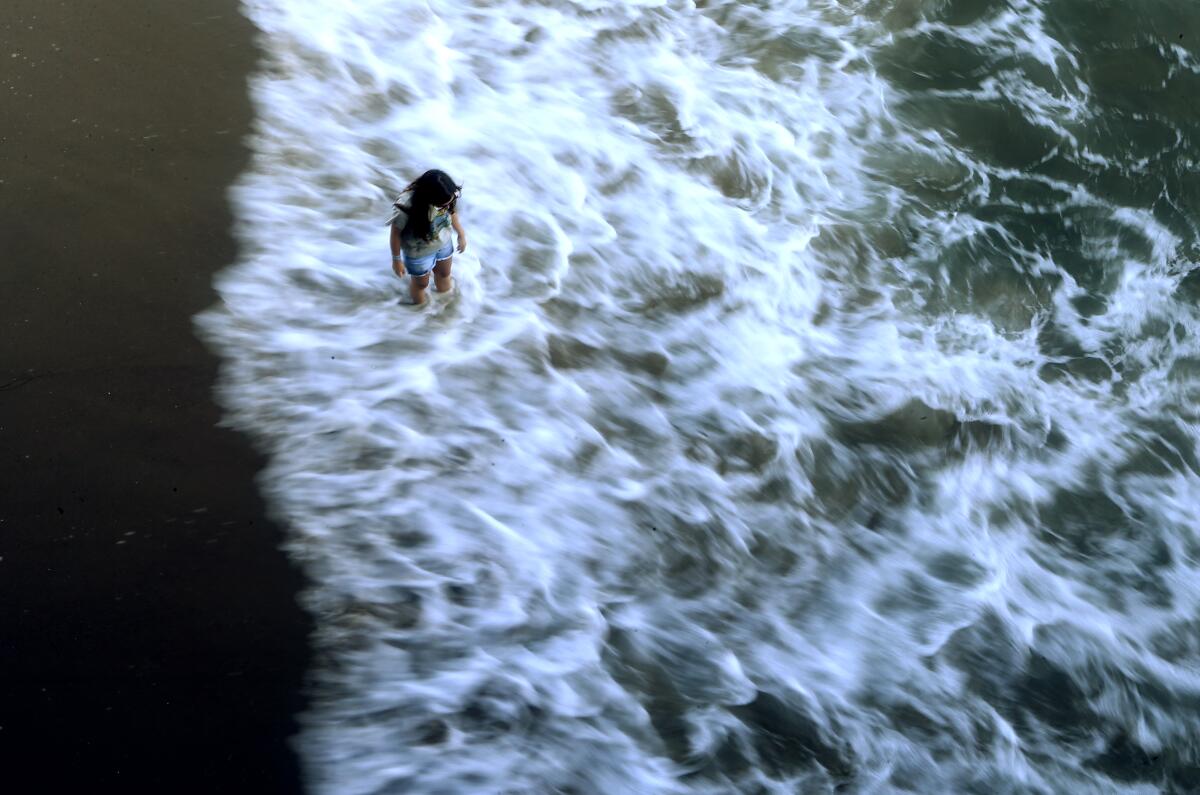
Most of the time, California’s waves are safe for swimmers and surfers to enjoy, but water quality experts warn there are certain times — and certain spots — that beachgoers may want to avoid.
Heal the Bay outlines those locations in its annual report card of the state’s beaches. The results reflect California’s wild winter — with multiple rain-triggered sewage spills — which led to only two beaches meeting the highest clean-water standards for the entire year.
Still, of California’s more than 400 beaches, 95% received top marks for water quality from April to October 2022, covering the state’s most popular window for beach recreation, according to the report from the Los Angeles environmental nonprofit whose focus is clean waterways.
“The report is kind of reassuring; it affirms that most of the beaches in California are clean and safe most of the time,” said Luke Ginger, a water quality scientist with Heal the Bay. “Water quality is good most of the summer, so we encourage people to get out and enjoy.”
However, 23 California beaches — 5% of those analyzed — earned a grade of C or lower for water quality during the warmer months, meaning water samples showed concerning levels of fecal pollution, the report found. Of the worst beaches for water quality, five were in San Mateo County and two were in Los Angeles County, according to the 33rd annual Heal the Bay report, released Wednesday.
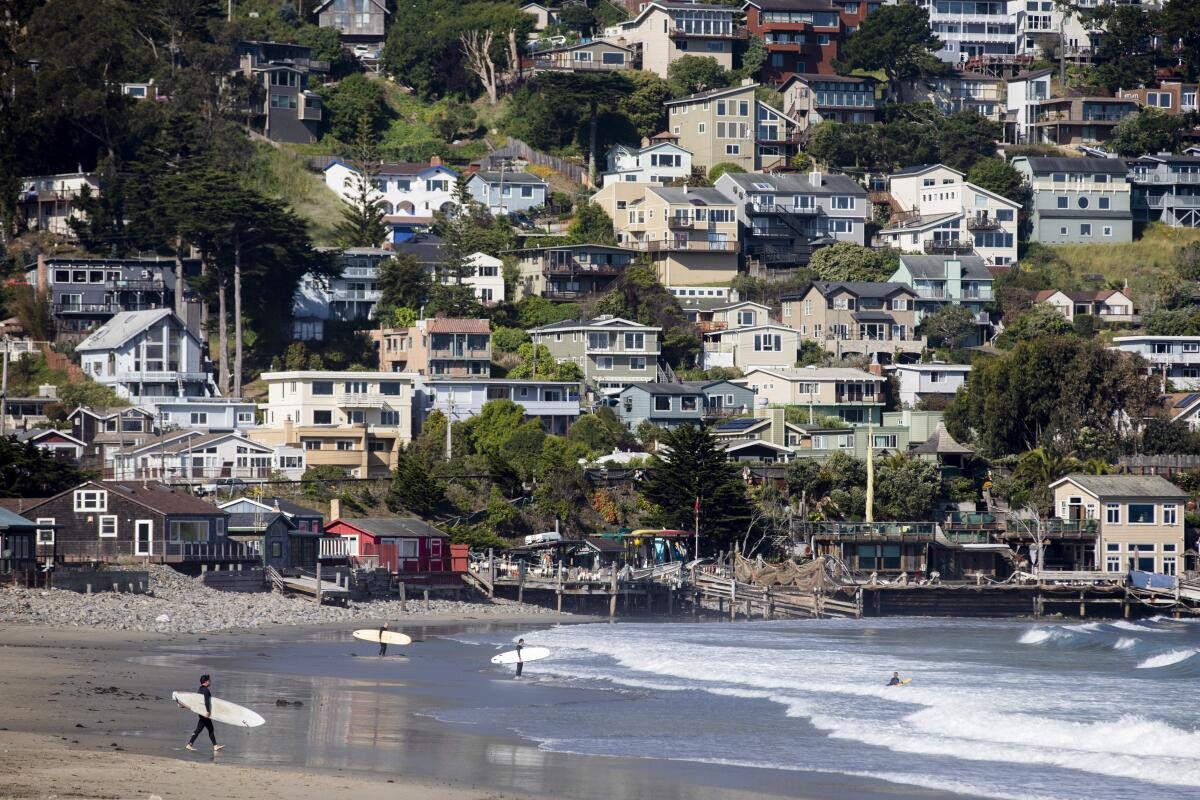
The beach rankings are based on routine water-quality testing conducted by local officials, then analyzed for concentrations of fecal-indicator bacteria, including from human and animal waste.
“We are fortunate to have beaches that are beautiful and clean most days of the year, but unfortunately, there are times and conditions when the water at the beach can make folks sick,” the report said. “Our coastal waters are regularly contaminated with pollutants such as chemicals, trash and fecal matter, which are harmful to human health and the ocean ecosystem.”
Particularly this winter, researchers saw some of the highest levels of those pollutants, as beaches often bore the brunt of the state’s runoff — with rain washing litter, pesticides and microplastics downstream — from one of the wettest winters in years.
“Rainfall has a huge impact on water quality because it just washes contaminants out into the ocean,” Ginger said. Many beaches saw a noticeable decline in water quality during the months of heavy precipitation, the scientist said, which led to only two beaches making the nonprofit’s “honor roll” this year, or meeting weekly clean water standards year-round. Last year, 51 made that list.
After another back-to-back cold front that pelted rain, heavy snow and even a tornado warning down onto Southern California, here are some precautions and commonly asked questions about whether it’s safe to go to the beach.
“The intention of the report isn’t to shame anybody ... [or] to scare people away,” Ginger said. “We’re trying to shine a light on some of the water quality issues, and trying to get folks to try to address them.”
So take a look at this year’s “beach bummer” list, spotlighting California beaches that received the poorest grades for water quality from April to October 2022 — all getting a grade of F — beginning with the worst. (The analysis also included three beaches in Tijuana because San Diego County officials also test those waters.)
California’s dirtiest beaches
1. (tie) Santa Monica Pier (Los Angeles County)
1. (tie) Playa Blanca (Baja California, Mexico)
3. Linda Mar Beach (San Mateo County)
4. Marlin Park (San Mateo County)
5. Erckenbrack Park (San Mateo County)
6. Tijuana River Mouth (San Diego County)
7. Pillar Point Harbor at Capistrano Road (San Mateo County)
8. Marina del Rey Mother’s Beach (Los Angeles County)
9. Poche Beach (Orange County)
10. Gull Park (San Mateo County)
Half of the beaches on the list are considered enclosed, which means a marina or jetty limits water flow in and out of the shoreline, so pollution tends to linger, the report said. That’s been an ongoing challenge for Mother’s Beach in Marina del Rey and almost all of the beaches on the list in San Mateo County.
Ginger said it was disappointing to see the waters at Santa Monica Pier among the worst for the second year in a row; in 2018, the pier finally avoided the “bummer” list after the installation of a stormwater capture system. He said birds around the pier are likely the main cause of poor water quality now, and officials are working to deter their nesting and roosting.
“If this bird-deterrent netting works,” Ginger said, “we could see good water quality in the future.”
Heal the Bay officials recommend that, no matter the beach, people enter the ocean at least 100 yards away from storm drains and piers, be mindful when visiting enclosed beaches and always wait at least 72 hours after it rains before entering the waves.
In addition to the increased rainfall and runoff, the state saw an increase in major sewage spills over the last few months, which Ginger said often are triggered by rain.
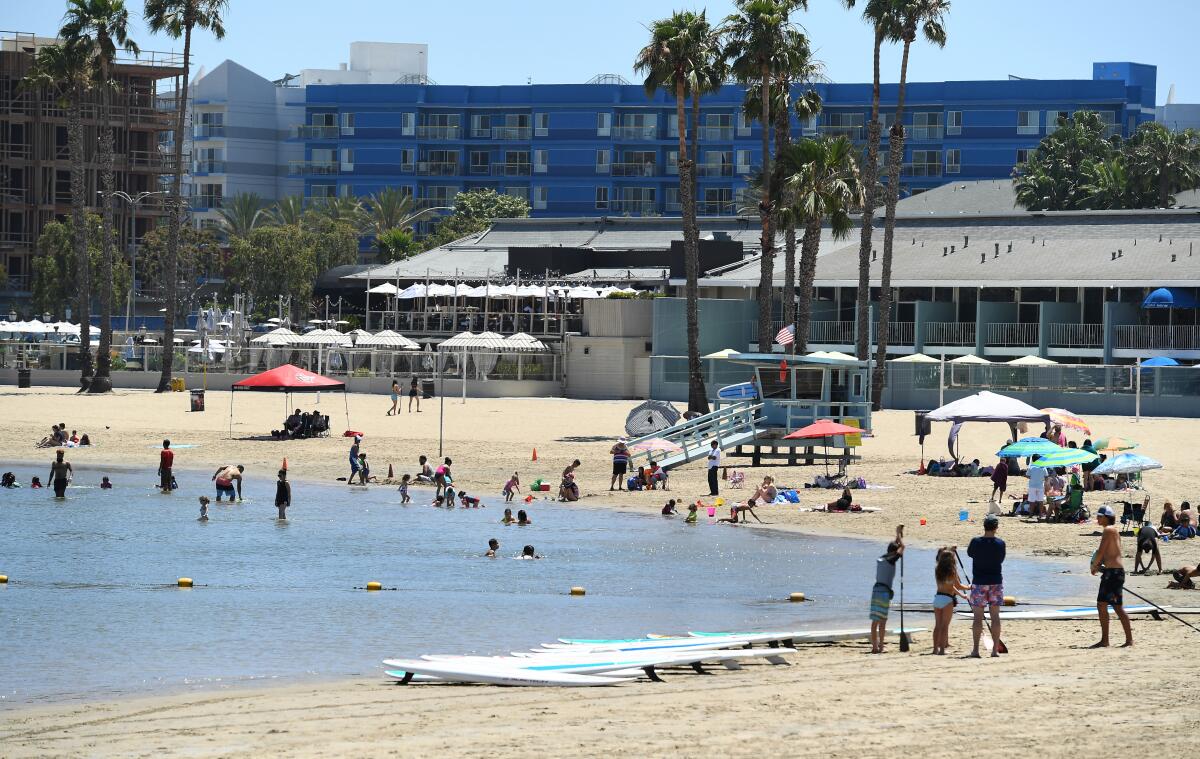
“We’ve actually seen a higher than average number of sewer spills, and much higher amount of sewage spilled into the ocean and coastal river and lakes,” Ginger said of the past year. Sewage continues to pose a threat to ocean safety, with Long Beach closing its waters earlier this month after a 50,000-gallon spill.
According to Heal the Bay, 45 million gallons of sewage spilled into the ocean and coastal waterways over the last year — from April 2022 through March 2023 — 16 million more gallons than the previous year.
“California has now experienced two consecutive years of elevated sewage spill amounts ... likely a result of faulty or failing sewage infrastructure, which is under more stress in wet weather,” the report said. “We urge local officials to invest seriously in infrastructure updates and public notification protocols to ensure the safety of all beach visitors.”
In its annual ‘beach report card,’ Heal the Bay graded hundreds of beaches in California and ranked the eight dirtiest beaches in the state.
Only Point Loma Lighthouse in San Diego County and Bean Hollow State Beach in San Mateo County received the highest marks for water quality all year, the report said, having “zero bacterial exceedances all year under all conditions.”
The nonprofit also analyzed freshwater swimming spots across L.A. County, finding that the worst places for water quality were primarily in the lower Los Angeles River watershed, where much of the riverbed is concrete. By contrast, some of the cleanest areas were in more natural areas, mostly in the San Gabriel River watershed and a few in the upper L.A. River watershed.
Ginger said that climate change would continue to bring unpredictable weather — as seen this winter with the extreme rainfall that followed a period of excessive drought — which makes improved sewage systems as well as green waterway infrastructure, like stormwater capture projects, even more important to keep waterways clean.
“So if you’re wondering what can be done to ensure it is safe to swim in our rivers, lakes and ocean year-round, it’s simple: Capture our stormwater before it collects pollution and reaches our waterways,” said Tracy Quinn, president and chief executive of Heal the Bay.
More to Read
Sign up for Essential California
The most important California stories and recommendations in your inbox every morning.
You may occasionally receive promotional content from the Los Angeles Times.
